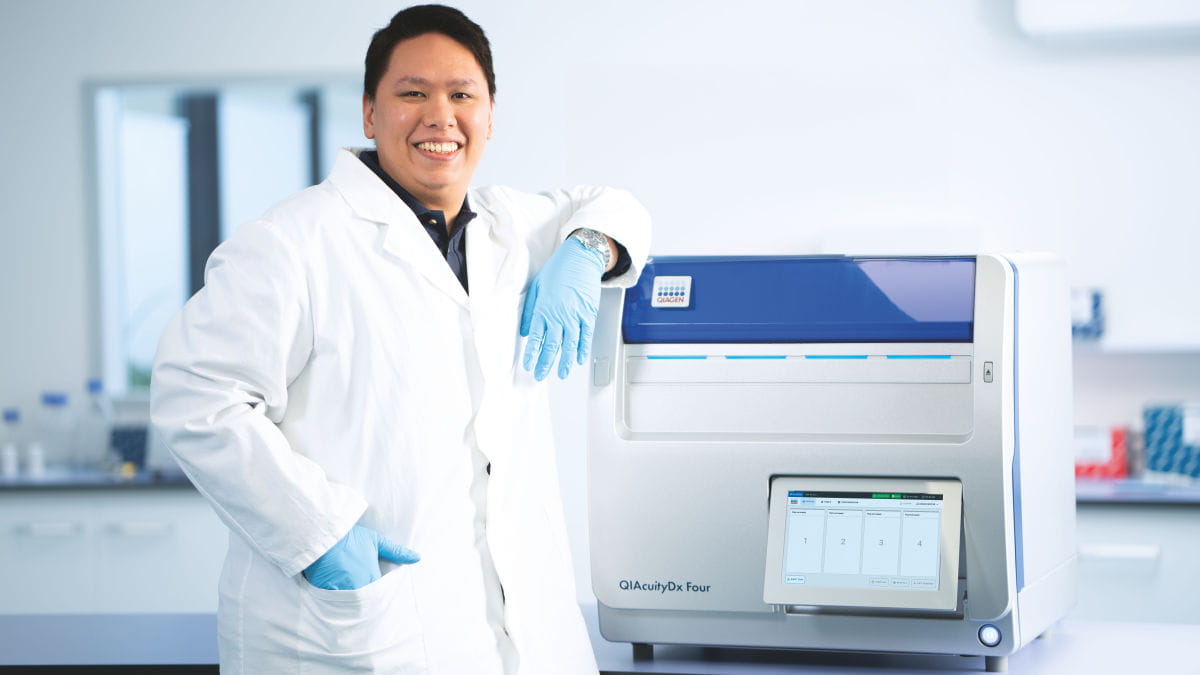
A technology that’s revolutionizing clinical testing
What is digital PCR (dPCR)? Whether you’d like to brush up on your background knowledge or explore for the first time the fundamentals of a technology for the absolute quantification of nucleic acid concentrations, we’ve got you covered. Learn all you need to know about dPCR here.
What are the features and benefits of dPCR for diagnostic testing?
What are the main applications for dPCR in molecular diagnostics?
Cancer biomarker detection
dPCR's high sensitivity and precision make it an invaluable tool for reproducible and reliable detection of cancer biomarkers at low analyte concentrations. This is particularly significant for identifying driver mutations and developing personalized treatment plans where applicable.
This feature is also important for monitoring treatment effectiveness, where the goal is to establish if there is a change in molecular expression and prevalence of biomarkers after treatment has been initiated.
Monitoring and MRD testing
Due to its high precision and absolute quantification features, dPCR is a valuable tool for monitoring the molecular response in oncology patient samples after initiating a targeted therapy. Sequential biomarker monitoring across multiple time points can provide useful data, alongside other clinical findings, that provide information about patient response to treatment and potential relapse.
Specifically within oncohematology, these features are valuable for minimal residual disease testing (MRD testing) for applications such as BCR::ABL in chronic myeloid leukemia (CML). Absolute quantification removes the need to produce a standard curve for quantitation reference, allowing more efficient use of plate wells and chemistry versus qPCR (3, 4).
Liquid biopsy
The non-invasive nature of liquid biopsy combined with the sensitivity of dPCR makes it a promising approach for diagnosis and monitoring treatment response and disease progression through the analysis through the analysis of circulating nucleic acids in body fluids. Liquid biopsy adds the potential for serial testing of patients where frequent tissue biopsies are not feasible (e.g., lung cancer).
Infectious disease diagnosis
For infectious diseases, dPCR is pivotal in identifying pathogens with low copy numbers and for applications where absolute quantification of the target provide valuable information. This is essential for accurate diagnosis and timely intervention, particularly in infectious disease applications.
Genetic testing and rare variant detection
dPCR excels in identifying rare genetic variants, contributing to the advancement of genetic testing. Its ability to quantify specific DNA sequences at low analyte concentration with high precision is instrumental in identifying rare genetic events and predispositions.
Featured resources – information to support your work
References:
- Madariaga RS, Gallego GB, Santana FR, Sperança MA. Comparison of real-time PCR and digital PCR in environmental microbial quantification: A review study. Anal Chem Insights 2018;17(3):123–134.
- Nguyen HT, Jeong KJ, Cha CY, Shin K, Kim H, Choi HJ. Comparison of real-time PCR and digital PCR in detection of enteroviral RNA in clinical samples. J Virol Methods 2017;246:34–40.
- Tan HH, Chia KS, Chng WJ, Lim ST. Quantitative analysis of BCR-ABL1 transcripts in patients with chronic myeloid leukemia using digital PCR. J Mol Diagn. 2014;17(3):123–134.
- Albitar M, et al. Comparison of next-generation sequencing and quantitative real-time PCR for minimal residual disease testing in acute lymphoblastic leukemia. Clin Lymphoma Myeloma Leuk. 2021;17(3):123–134.
- Molecular Diagnostics Market Size, Share & Trends Analysis. November 24, 2023 https://www.linkedin.com/pulse/molecular-diagnostics-market-size-share-trends-analysis-hancock-evxbf/ (Accessed January 25, 2024).
The QIAcuityDx medical device is currently under development and will be available in 20 countries in H2 2024. Product availability may vary by country specific regulatory requirements and approvals. Contact your country representative or visit www.qiagen.com for further details.
QIAcuity Digital PCR instruments are sold under license from Bio-Rad Laboratories, Inc. and exclude rights for use with pediatric applications.



